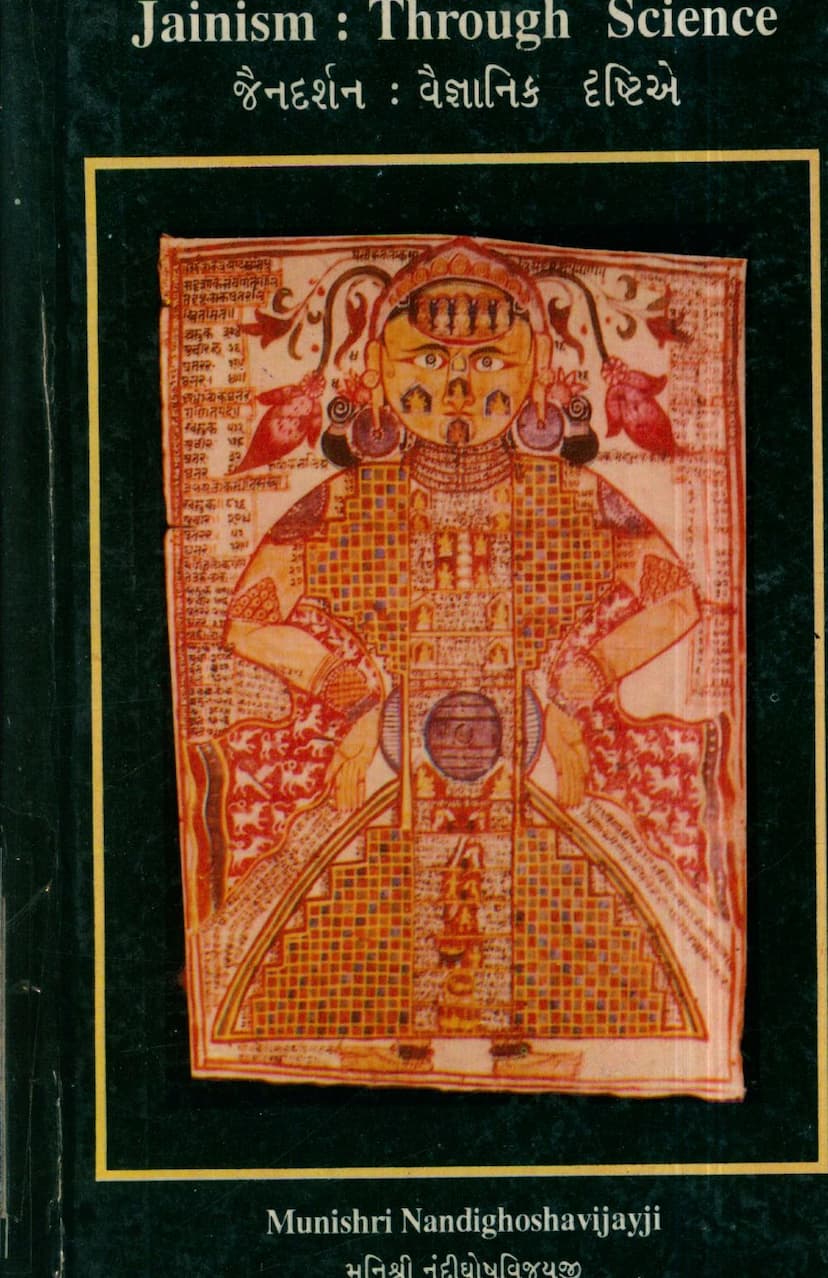Jain Darshan Vaigyanik Drushtie
Added to library: September 1, 2025

Summary
Here is a comprehensive summary of the Jain text "Jain Darshan Vaigyanik Drushtie" (Jainism: Through Science) by Munishri Nandighoshvijay, based on the provided pages:
Overview:
"Jain Darshan Vaigyanik Drushtie" is a compilation of articles by Munishri Nandighoshavijayji, a Jain Muni, that explores the principles and tenets of Jain philosophy through the lens of modern science. The book, published by Shri Mahavira Jaina Vidyalaya in Bombay, aims to bridge the perceived gap between spiritual and scientific understanding, particularly for the younger generation. Munishri Nandighoshavijayji, a disciple of Acharyashri Vijay Suryodayasuriji Maharaj, draws upon his profound knowledge of Jain scriptures and his dedicated study of scientific principles to present a harmonious view.
Core Argument:
The central theme of the book is that Jain philosophy, despite its ancient origins, contains profound insights that resonate with and can be elucidated by modern scientific discoveries. Munishri Nandighoshavijayji argues that while science is empirical and philosophy is reflective, their fundamental principles are often aligned. He endeavors to present spiritual truths in an intellectually acceptable manner, moving beyond mere faith and feeling.
Key Scientific Topics Discussed and Their Jain Philosophical Connections:
The book delves into various scientific domains, comparing and contrasting them with Jain doctrines:
- Special Theory of Relativity: Munishri Nandighoshavijayji critically examines Einstein's theory, particularly the limitations imposed by the constant speed of light. He references Jain scriptures, such as the Bhagavati Sutra, which suggest that particles (paramāņus) can move at speeds exceeding that of light and can also change their velocity, implying a variable speed of light. He questions the absoluteness of certain relativistic postulates in light of Jain cosmology and physics.
- E=mc²: The author addresses potential misunderstandings surrounding Einstein's famous mass-energy equivalence equation. He clarifies that 'm' in the equation often represents relativistic mass, not rest mass, and explains how Jain philosophy's concept of infinite energy within atoms (paramāņus) can be viewed in relation to this.
- Light: Waves or Particles? The book explores the dual nature of light, a topic debated extensively in modern physics. Munishri Nandighoshavijayji draws parallels with Jain descriptions of light (Taijas Vargaņā) and sound (Bhāṣā Vargaņā) as being composed of microscopic particles (paramāņus). He suggests that the apparent wave-like behavior of light can be explained by the inherent particle nature and rotational properties of these paramāņus.
- Intensity of Light: The author discusses how the intensity of light is related to the number of photons, drawing a connection to Jain concepts of particle distribution.
- Doppler's Effect: Munishri Nandighoshavijayji presents a reinterpretation of the Doppler effect, suggesting that the frequency of photons might remain constant, and variations in perceived frequency could be due to the number of photons and their serpentine paths, rather than a change in inherent frequency itself.
- Human Physiology and Biology: The book explores detailed descriptions of human anatomy found in Jain scriptures, such as the six types of bone joints (samghayana), the number of ribs, and the composition of the body. It compares these ancient descriptions with modern biological understanding. The text also touches upon Jain embryology and the stages of human development as described in scriptures.
- Jiva (Living Beings) and Classification: Jain biology classifies living beings into five categories based on the number of sense organs (Ekendriya to Panchindriya). The book addresses scientific challenges to the Jain concept of certain beings being asexual or neuter, discussing the scientific understanding of reproduction in insects and plants versus Jain classifications.
- Vigai and Mahavigai (Modified Foods): The author analyzes the Jain dietary restrictions on certain food items (vigai and mahavigai) from a scientific and health perspective. He discusses the presence of bacteria in milk, curd, and other dairy products, and the processes of preservation and consumption within the Jain tradition, often finding scientific justification for these practices, while also highlighting areas for clarification and potential re-evaluation.
- Time and Space: The book discusses the Jain concepts of "Vyavahar Kala" (conventional time) and "Nischay Kala" (absolute time) and compares them with modern physics' understanding of time as relative and intertwined with space.
Methodology and Approach:
Munishri Nandighoshavijayji's approach is characterized by:
- Scholarly Rigor: He meticulously references Jain scriptures and scientific theories, presenting detailed explanations and comparisons.
- Impartiality: The preface and acknowledgments emphasize an impartial presentation of facts, without emotional bias.
- Bridging Tradition: The author aims to make ancient Jain wisdom accessible and relevant to contemporary understanding by connecting it with scientific principles.
- Addressing Doubts: The book is a response to common questions and potential discrepancies between Jain teachings and scientific findings, seeking to resolve them through reasoned discourse.
- Acknowledging Limitations: The author is forthright about the challenges in this interdisciplinary approach, acknowledging the difficulty of practical experimentation for a Muni and the need for collective scientific inquiry.
Significance and Impact:
"Jain Darshan Vaigyanik Drushtie" is considered a valuable contribution to Jain literature, offering a modern scientific perspective on timeless spiritual teachings. It aims to:
- Enhance Understanding: Provide a deeper, more rational understanding of Jain principles for both Jains and non-Jains.
- Inspire Youth: Engage the younger generation by demonstrating the scientific underpinnings of their heritage.
- Promote Interfaith Dialogue: Foster a bridge between religious and scientific communities.
- Preserve and Propagate Knowledge: Highlight the scientific wisdom embedded in ancient Jain scriptures, which might otherwise remain obscure.
The book has received endorsements from various scholars and institutions, recognizing its scholarly merit and its timely exploration of the convergence between Jainism and science. It represents a significant effort to demonstrate the enduring relevance and profound depth of Jain philosophy in the modern scientific era.